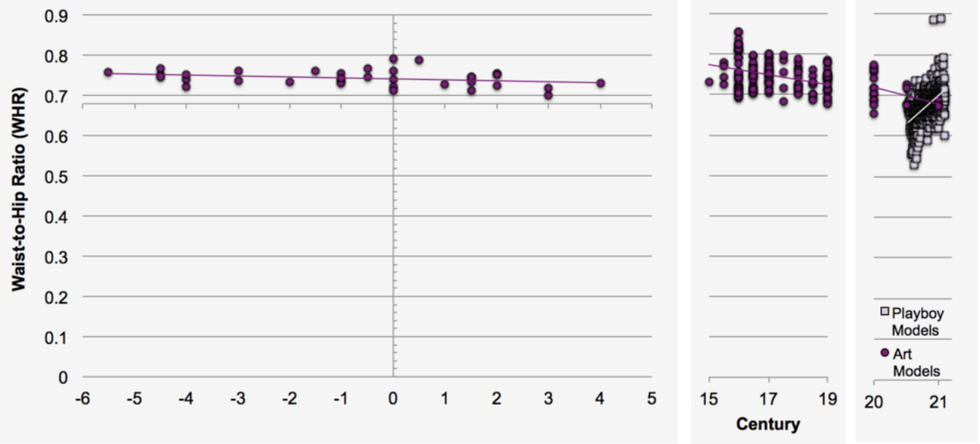News
Jessica Brown
Dec 26, 2016

Picture:
Shutterstock / ruigsantos
There's one particular body measure that, according to certain men, indicates a 'woman's attractiveness', and it is apparently forever changing.
Waist-to-hip ratio (WHR) is used to measure the the ratio between the body circumference at the waist and the hips. It's also been found time and time again to be a big influence of how attractive men find a woman, as it indicates fertility.
It's calculated as waist measurement divided by hip measurement ( W ÷ H ). For example, a person with a 25″ (64 cm) waist and 38″ (97 cm) hips has a waist–hip ratio of about 0.66.
Researchers from the University of Montpellie and London School of Hygiene and Tropical Medicine investigated the evolution of WHR from 500 BCE to the present. They used painting and sculptures representing women who were considered beautiful, and analysed the evolution of WHR from 1920 to 2014 using measurements of Playboy models and winners of several Miss pageants.
They found that men’s preference for women’s WHR was level from 500 BCE to 400 CE, with a mean WHR of 0.74.
Then, preferences for WHR decreased from 1400 to the present, with an average of 0.68 for the beginning of the 21st century.
Between 1921 and 2014, the Playboy models and Miss pageants winners’ WHR averaged at 0.677.
To give context, the current recommended guidelines for a healthy WHR is below 0.85 for women.
Here's what the findings look like:

More: The strange way men can appear more attractive
More: This is what men find most attractive about a woman's face
Top 100
The Conversation (0)













